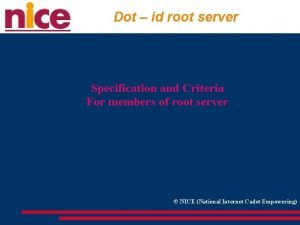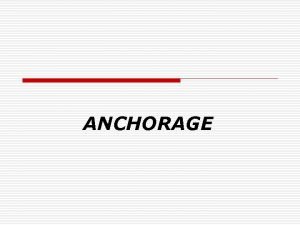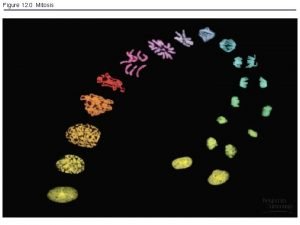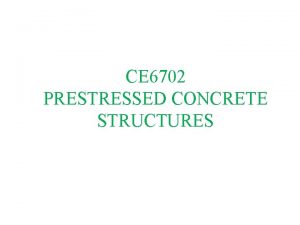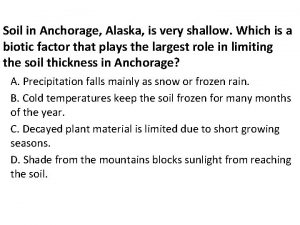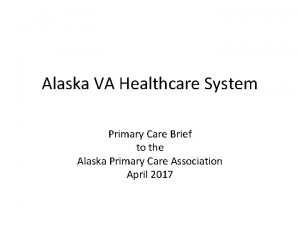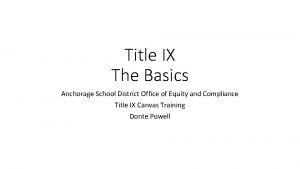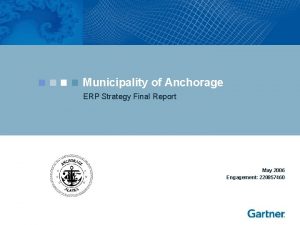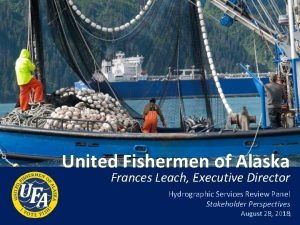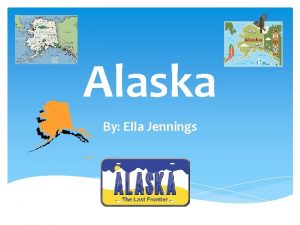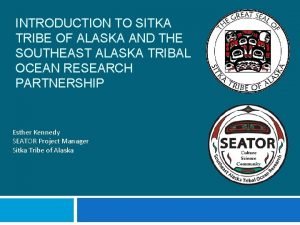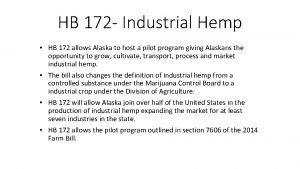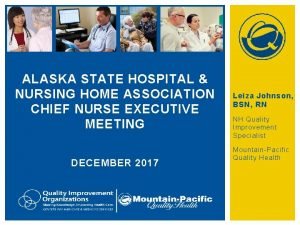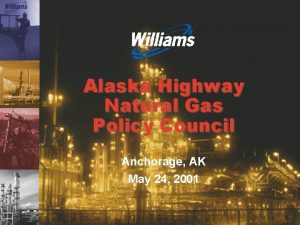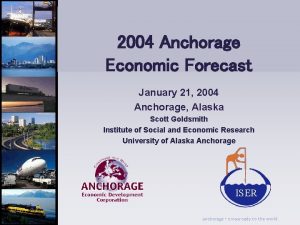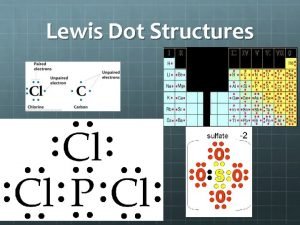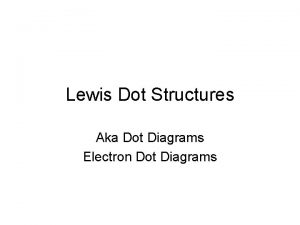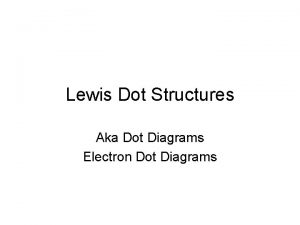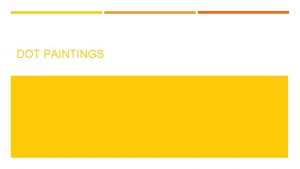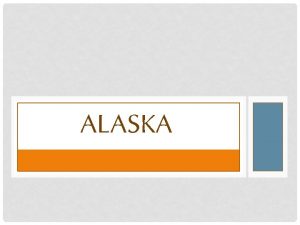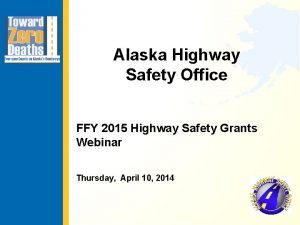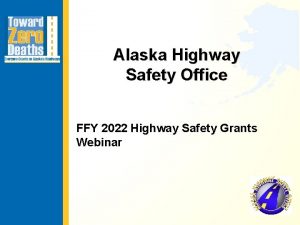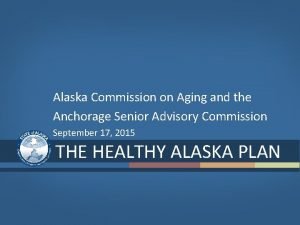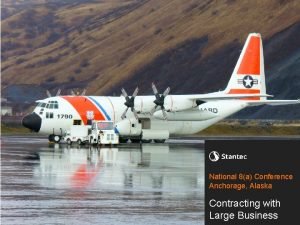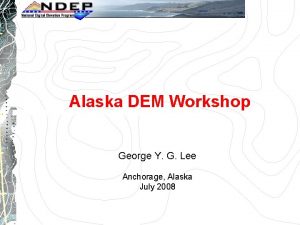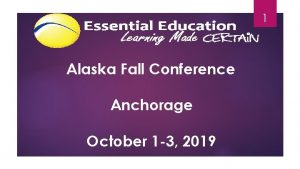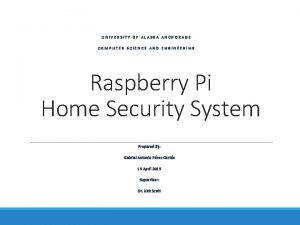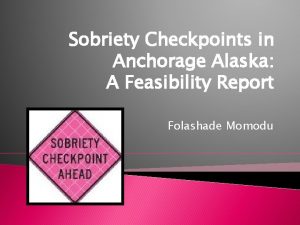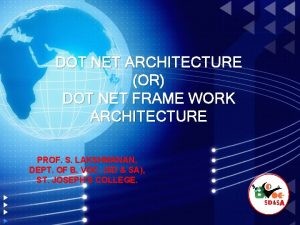SIMULATION OF ANCHORAGE HIGHWAY TO HIGHWAY Alaska DOT
























- Slides: 24

SIMULATION OF ANCHORAGE: HIGHWAY TO HIGHWAY Alaska DOT Quarterly Design Meeting Anchorage, AK April 12 th, 2011 Steve Speth, P. E. , PTOE Professional Associate HDR Engineering

Why Simulation? � Older methods that estimate LOS based on equations don’t cover all scenarios or even model some situations correctly.

Original Synchro Network – 19 intersections

Sample Synchro Output

Why Simulation? � Older methods that estimate LOS based on equations don’t cover all scenarios or even model some situations correctly. � Simulation allows us to look at the individual intersections and interchanges as part of a whole system. All impacts can be analyzed.


Existing Conditions – Study Corridor � VISSIM – Existing conditions calibration � Counts – from various sources � Balanced flow map – 3 hours PM, 2 hours AM � Model output closely matched existing volumes � Queue, congestion matching � Original model was only of study corridor and adjacent intersections

Original Existing VISSIM Network 95 intersections, 6 freeway interchanges

Why Simulation? � Older methods that estimate LOS based on equations don’t cover all scenarios or even model some situations correctly. � Simulation allows us to look at the individual intersections as part of a system. All impacts can be analyzed. � Allows us to build a tool that can be updated and continually used on this project and future projects

Expanded Existing Conditions � VISSIM – Existing conditions calibration �EXPANDED network!

Expanded Existing VISSIM Network 122 intersections, 6 interchanges

Expanded Existing Conditions o VISSIM – Existing conditions calibration o o EXPANDED network! Missing some data, need to have OD Used TRANSCAD (regional model) volumes How do you get from Travel Demand model to detailed turning movements? (future models as well) o Originally did sub-area demand model to T-flow fuzzy o Time consuming, unhappy with “fuzzy” results o Dynamic Assignment in VISSIM o Takes several simulation runs to reach convergence o Meso-scopic model? o Similar issues, still a time consuming process

Future Conditions Modeling Process Calibrated Behavior (from Existing) OD Volumes from Trans. CAD Draw/Layout Concept Dynamic Assignment Fatal Flaw Testing Static Routing Optimize Design Optimize Signal Timing Output Processing

Why VISSIM? � Capability � Ability to model the entire area and direct impacts of the project to surrounding street system � Dynamic Assignment � Multiple hours, realistic queue building � Comparison of concepts � Flexibility � Ability to model various geometric / control conditions � “DUMB” model – you have to tell it everything � Output capabilities are endless




Highway 2 Highway Models � Various models (am & pm peak periods) � Existing � No build (fails, not all traffic served) � Orca (partially completed – on hold) � 15 th (various scenarios, nearly complete – using to test interchange locations & types, weave tie downs, etc) � Ingra/Gambell (various scenarios, nearly complete – using to test interchange locations and types, weave tie downs, etc)

Future Conditions Modeling Fatal Flaw testing � “What If” � � Alternative evaluation � Design Optimization � Alternative Comparison � Various outputs � Visualization � 2 D, 3 D, Enhanced graphics



Next Steps – VISSIM Modeling Finish Optimizing 15 th and Ingra/Gambell Concepts � Produce Outputs to compare “optimized” concepts � � Travel Times � Network Wide Stats � Intersection / Link Stats � “Sensitivity” testing? � What if volumes are 10, 20, 30% higher? � Where are the “pinch points”? � Which concept has the longest life? � Interim year projects? � What projects should be built first? � Most efficient order to build projects? � Construction phasing?

SIMULATION OF ANCHORAGE: HIGHWAY TO HIGHWAY THANK YOU!!! QUESTIONS? ? Steve Speth, P. E. , PTOE Professional Associate HDR Engineering 541 -575 -0434 steve. speth@hdrinc. com

DDI Locations Open to Traffic Springfield, MO – I-44/MO 13 • • • American Fork, UT – I-15/Pioneer Crossing Springfield, MO – National Blvd. /MO 60 Alcoa, TN – US 129 Bypass/Middlesettlements Rd. St. Louis, MO – I-270/Dorsett Road
 192 dot 168 dot 1 dot 1
192 dot 168 dot 1 dot 1 Intermaxillary anchorage
Intermaxillary anchorage Anchorage dependence
Anchorage dependence Prestressing a concrete beam with sloping or curved cables
Prestressing a concrete beam with sloping or curved cables Implant components
Implant components Anchorage rotary
Anchorage rotary The finest grained soils are richest in
The finest grained soils are richest in Va hospitals in alaska
Va hospitals in alaska Anchorage school district office
Anchorage school district office Tension anchorage length
Tension anchorage length Insulfoam anchorage
Insulfoam anchorage Anchorage length eurocode
Anchorage length eurocode Municipality of anchorage procurement
Municipality of anchorage procurement Anchorage
Anchorage Anchorage job center
Anchorage job center Closed dot in graphing inequalities
Closed dot in graphing inequalities .net vs java
.net vs java United fishermen of alaska
United fishermen of alaska Alaska historic preservation act
Alaska historic preservation act State nickname of alaska
State nickname of alaska Sitka tribe of alaska scholarship
Sitka tribe of alaska scholarship Alaska hb 172
Alaska hb 172 Alaska state hospital and nursing home association
Alaska state hospital and nursing home association Alaska performance scholarship
Alaska performance scholarship Alaska dental school
Alaska dental school
